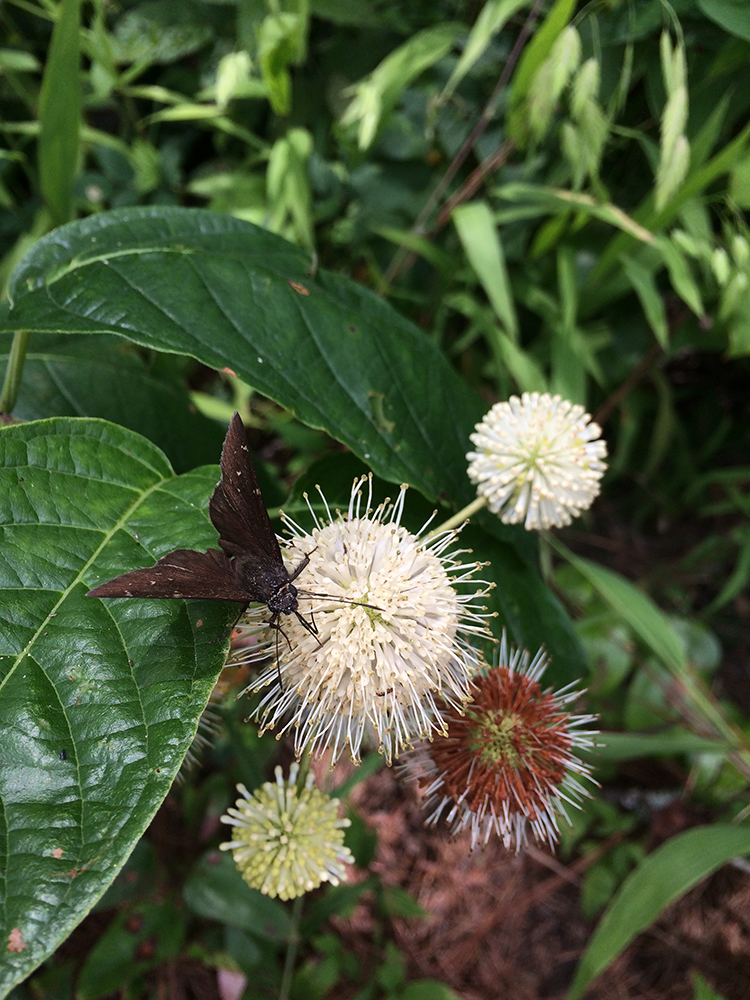Nature produces some interesting shapes, which is true for the flower of the buttonbush (Cephalanthus occidentalis).
Common buttonbush (or buttonwillow) produces these crazy-looking little spiky ball-like blooms of compound florets. They’re pretty cool, actually, and both bees and butterflies agree.
I recently caught this skipper butterfly feeding on a buttonbush flower while hiking in the Tombigbee National Forest.
Perfect for Wet Soil & Shade
Native to the continental U.S., buttonbush is perfect for planting in those spots of wet soil in your garden where nothing else seems to want to grow. It is commonly found along stream edges or in moist soils along ditches and swamps, but this adaptable native shrub will grow in most conditions. If you take the care to get it established, it can grow in dry soil or standing water.
Bloom Time
Bloom time is generally spring to summer (July – Sept), and the flowers will produce a cluster of tiny reddish fruit in fall. The flowers are unique and have a pleasant fragrance. The leaves produce nice fall color, turning red as the weather changes.
Growth Form
This shrub can grow to be as tall as 12 feet and almost equally as wide. If you want a smaller shrub, you can obtain that by consistent trimming. Buttonbush produces multiple branches, which gives it a nice, full shape. The leaves are ovate to lanceolate in shape and are oppositely arranged on arcing branches.
Light & Soil Requirements
Buttonbush is usually found growing at the edge of streams or ponds. It prefers shade to part-shade. It can grow well in moist or wet soils and standing water. It grows in a variety of soils, from sandy to clay.
Wildlife Value of Buttonbush
Buttonbush flowers provide nectar for bees and butterflies. Ducks and other waterfowl feed on the seeds of this bush and use it for cover. Deer will feed on the new growth of buttonbush.
The leaves contain a toxic chemical if ingested, so be sure not to plant it around livestock or in a location where animals or children might eat it.
Where to Find Buttonbush
In Mississippi, you can find it for sale in some of the nurseries that sell native plants, particularly Nativ Nurseries.
How to Propagate Buttonbush
Collect seeds in late summer or early fall. It’s better to collect the seeds before the seedhead begins to fall apart. Sow the seeds directly in the soil.
You can also propagate buttonbush through stem cuttings in July or August. Take 6 to 8-inch cuttings from the softwood of the plant. Remove the bottom 4 to 5 inches of leaves. Dip the cut end into rooting hormone and place it in potting soil.
Keep the potting soil moist, but not wet, until there is resistance when you gently tug on the cutting. You might see some leaves begin to sprout as well at the time when roots have developed. Then you can transplant them into their final location.


